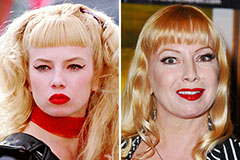In the ever-evolving landscape of digital media interaction, web design and graphic design have emerged as vital components in crafting compelling user adventures. Web designers architect the framework of websites, ensuring seamless navigation and a coherent user experience. Graphic designers, on the other hand, infuse visual appeal into these digital spaces with eye-catching graphics, logos, and visual assets that resonate audiences.
Through a harmonious blend of technical expertise and creative vision, web and graphic designers forge digital experiences that are both purposeful and aesthetically pleasing. Whether it's a corporate website, a personal blog, or a social media campaign, the synergy between these two disciplines is essential in inspiring success in the digital realm.
Pixel Perfect: The Art and Science of Visual Communication
Visual communication grasps audiences on a intuitive level. It's a powerful instrument for conveying ideas and shaping understandings. Pixel perfect design isn't just about crisp images; it's about the strategic use of visual elements to communicate a compelling message.
- Whether you're designing a website, a logo, or a social media campaign, the principles of pixel perfection remain the same: attention to detail, knowledge of your audience, and a strong grasp of design fundamentals.
- Tonal choices, typography, imagery – every element plays a essential role in forming the overall impression.
Finally, pixel perfect design is about molding visual experiences that are not only aesthetically pleasing but also effective. It's a ongoing pursuit of perfection in the world of visual communication.
Evolve From Concept to Creation: The Workflow of a Designer
A designer's path is a fascinating exploration of creativity and strategy. It all initiates with a spark, an idea, a concept that sets the stage click here for a compelling piece. From there, the designer sets out on a structured workflow to refine this initial concept into a tangible creation.
- Conceptualization: This initial phase involves developing ideas, understanding target audiences, and defining the core goal of the design.
- Visualization: Basic sketches and digital prototypes come to life, allowing the designer to visualize with different solutions.
- Production: Once a direction is chosen, the design evolves through multiple rounds, each involving detailed execution
- Presentation: The final version is presented with clients or stakeholders, gathering feedback and shaping further refinements
Ultimately, the designer's workflow is a dynamic and iterative process that culminates a polished creation that powerfully communicates its intended concept
Bridging the Gap: How Web and Graphic Design Work Together
In the realm of digital creation, web design and graphic design often operate independently. However, these two disciplines are increasingly converging, forming a powerful partnership that elevates the overall user experience. Web design focuses on the functionality of online platforms, ensuring smooth navigation and seamless content delivery. Graphic design, on the other hand, brightens websites with visual appeal through branding, typography, imagery, and layout. This fusion creates a cohesive and compelling online presence.
- Furthermore, a strong understanding of both disciplines allows designers to create websites that are not only visually stunning but also user-friendly.
- As a result, the collaboration between web and graphic design leads to more effective, memorable, and impactful online experiences.
The Evolution of Design: Trends Shaping the Future
Design is a constantly shifting field, frequently transforming itself to reflect the shifting needs and desires of society. As we move into the future, several key trends are poised to influence the landscape of design, propelling creativity to new levels. One notable trend is the growing emphasis on sustainability in design.
Users are requiring more conscious products and services, encouraging designers to implement responsible practices at every stage of the design process.
- Another significant trend is the rise of AI-powered design tools. These tools empower designers to automate tasks, allowing them up to devote on more creative aspects of their work.
- Furthermore, we are witnessing a transition towards more customized design experiences. Advancements in technology, such as big data, allow designers to acquire valuable information about user preferences and tendencies.
This enables them to design products and services that are specifically matched to the individual needs of each user. As these trends evolve, the future of design promises to be exciting, with designers playing an growing role in transforming our world.
Creative Design: Essential Skills for the Modern Creative
In today's dynamic environment, creative web and graphic designers are in high request. Mastering essential skills is crucial for thriving in this competitive field. A strong understanding in design principles is paramount, alongside proficiency in industry-standard software like Adobe Illustrator. Effective communication and partnership skills are also vital for working efficiently with clients and teams. Continuously enhancing your skillset by exploring latest technologies and design trends is key to staying relevant of the curve.
- Content Creation
- User Experience (UX)
- Web Development
 Ralph Macchio Then & Now!
Ralph Macchio Then & Now! Romeo Miller Then & Now!
Romeo Miller Then & Now! Andrea Barber Then & Now!
Andrea Barber Then & Now! Traci Lords Then & Now!
Traci Lords Then & Now! Jane Carrey Then & Now!
Jane Carrey Then & Now!